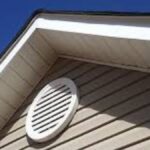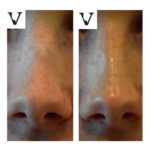Understanding Cold Attic Syndrome
Living in a home with an inadequately insulated attic can have far-reaching effects on comfort, health, and maintenance costs. Cold attic syndrome refers to a situation where insufficient insulation allows heated air from living spaces to escape into the attic, exposing homes to fluctuating temperatures, higher utility bills, and the risk of structural damage.
When this escape of warmth occurs, the attic becomes a conduit for heat loss and moisture infiltration. Not only does this reduce indoor comfort, but it also sets the stage for mold growth and costly repairs. Homeowners often overlook the true cost of neglecting attic insulation, not realizing that something as simple as a poorly insulated attic can impact everything from monthly expenses to household health.
Identifying and addressing the root causes of cold attic syndrome is crucial. Beyond energy inefficiency, a badly insulated attic can trigger a domino effect of problems such as ice dams in colder climates, which damage roofing and create persistent leaks and water stains inside the home. Promptly addressing these issues ensures both immediate relief from temperature swings and long-term protection for your property.
Signs of Inadequate Attic Insulation
- Uneven Temperatures: If rooms directly beneath your attic feel excessively cold in winter or too hot in summer, the lack of effective insulation is likely to be the cause. This unevenness makes it uncomfortable to enjoy these living spaces, forcing you to rely more on your heating and cooling systems.
- High Energy Bills: A sharp rise in your home’s energy bills can often be traced back to the additional strain placed on HVAC systems due to escaping heat. When insulation fails, your furnace or air conditioner must work harder to maintain a stable indoor temperature, resulting in increased energy consumption.
- Ice Dam Formation: In regions prone to snowfall, inadequate attic insulation can lead to the formation of potentially hazardous ice dams. As heat escapes through the roof, it melts the snow, which then refreezes at the eaves—leading to costly water damage inside your home and potential roof repairs (U.S. Department of Energy).
- Moisture and Mold Growth: An insufficiently insulated attic often leads to condensation. This humid, stagnant environment is ideal for the growth of mold and mildew, which can quickly spread to other areas of the house if left unchecked.
Health Implications of Poor Attic Insulation
One of the most overlooked consequences of poor attic insulation is its impact on household health. Persistent dampness from recurring condensation creates optimal conditions for mold colony development. Using the best attic home cleaner can help reduce mold, dust, and allergens, improving air quality in these hard-to-reach spaces. Mold spores, when inhaled, can trigger allergies, respiratory distress, and exacerbate existing medical conditions, such as asthma. Children and the elderly are particularly susceptible to the adverse health effects caused by indoor air pollutants derived from mold growth (Centers for Disease Control and Prevention).
Structural Risks Associated with Cold Attic Syndrome
Consistent moisture brought about by condensation doesn’t stop at mold; it goes further to corrode and weaken the wooden elements of your attic. Over time, exposure to moisture can lead to wood rot, deterioration of insulation materials, and potential pest infestations. Eventually, this silent degradation can create hazardous conditions and seriously compromise the overall durability of your home’s structure.
Steps to Improve Attic Insulation
- Assess Current Insulation: The first step is evaluating the amount and quality of your existing insulation. Measuring the R-value—a rating that measures insulation’s resistance to heat flow—provides clarity on whether your attic meets recommended standards or if an upgrade is necessary.
- Seal Air Leaks: Locate gaps around vent pipes, chimneys, and attic hatches where conditioned air escapes. Effective sealing of these leaks drastically curtails heat loss and prevents future moisture infiltration.
- Upgrade Insulation Materials: If your insulation is outdated, compressed, or water-damaged, consider installing high-efficiency options such as blown-in cellulose, fiberglass batts, or spray foam. Newer materials offer superior resistance to heat transfer and moisture absorption.
- Ensure Proper Ventilation: Ventilation isn’t just about keeping the space cool in the summer—proper airflow is vital year-round to prevent excess moisture from lingering, thereby protecting both new and existing insulation from damage.
Benefits of Proper Attic Insulation
- Enhanced Comfort: When your attic’s thermal barrier is intact, indoor temperatures remain consistent and comfortable in every season.
- Energy Efficiency: The reduction in heat loss translates into immediate savings on your heating and cooling costs.
- Improved Air Quality: By halting moisture buildup and inhibiting mold, you help maintain cleaner, safer air for your family.
- Structural Integrity: Moisture control prevents decay and rot, ensuring your roof, support beams, and ceilings remain strong and damage-free for an extended period.
Final Thoughts
Proactive attention to attic insulation doesn’t just resolve cold attic syndrome—it sets the stage for a healthier, safer, and more comfortable home. Through careful assessment, thorough cleaning, strategic upgrades, and good ventilation, you can sidestep the many pitfalls associated with poor insulation. The investment pays off quickly in better living conditions, reduced bills, and lasting peace of mind for any homeowner.







